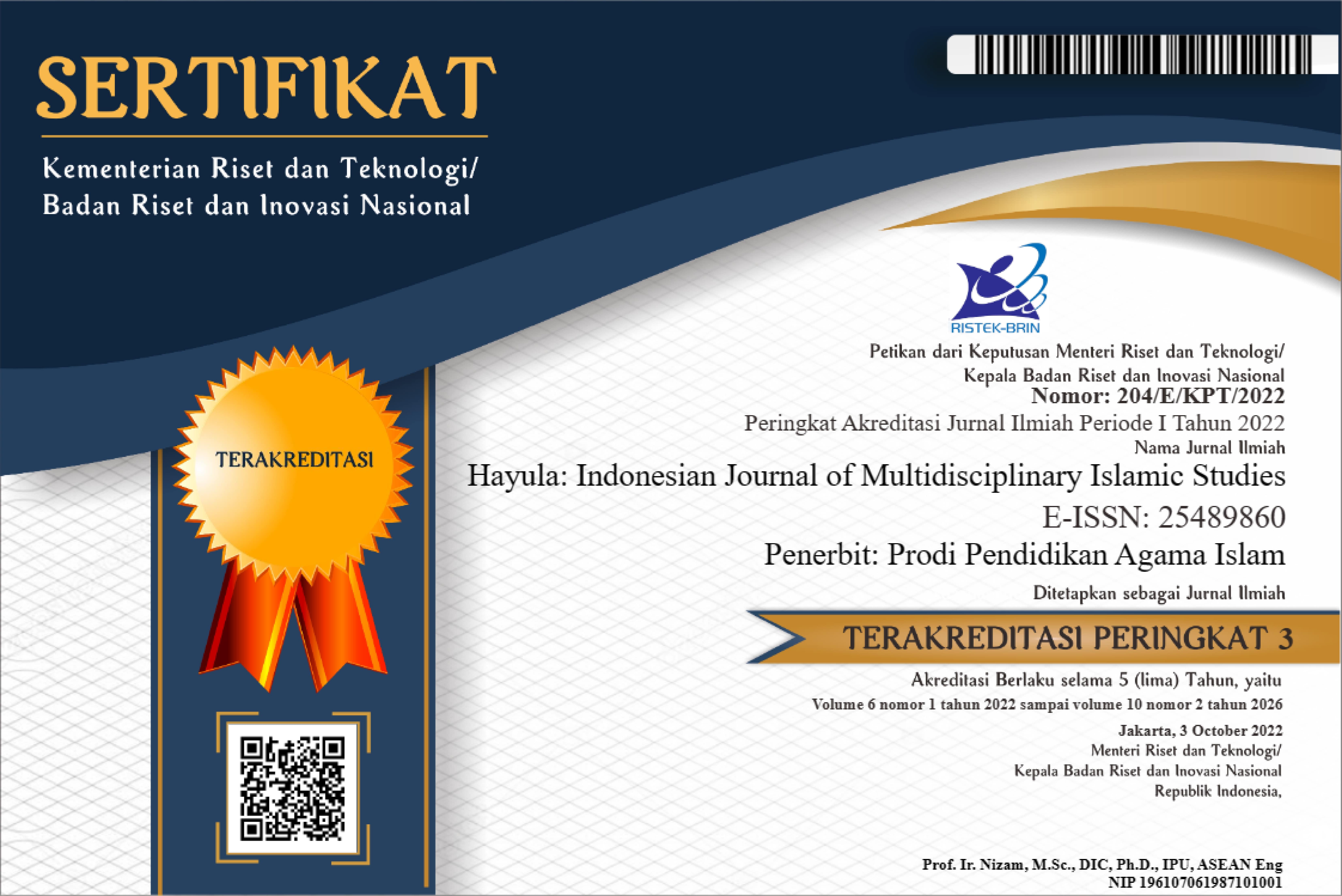The Discourse of Muhammadiyah and Nahdlatul Ulama with Considerations of Geertz’s Religion of Java
DOI:
https://doi.org/10.21009/hayula.002.1.04Keywords:
Muhammadiyah, Nahdlatul Ulama, Clifford GeertzAbstract
Muhammadiyah and Nahdlatul Ulama are two biggest Muslim organizations in the most populous Muslim country, Indonesia. Many studies have conducted to identify both roles in the Indonesian Islam context. However, there is lack study which actually traces possible similarities between the two. This paper illustrates the distinct description of the two organizations from the perspective of Clifford Geertz in his prominent work, the Religion of Java, where it covered some characteristics of the followers of both Muhammadiyah and Nahdlatul Ulama. This study then continues with possible similar identification of Muhammadiyah and Nahdlatul Ulama. This is qualitative study conducted through library research. This study concludes that despite the fact the differences, there are some similarities, which put the two organization together to contribute even more to the development of Islam in Indonesia. It then expects that the followers of both could work together to build peaceful Indonesian through better understanding of religious institutions such as the Muhammadiyah and Nahdlatul Ulama.
References
Alaena, B. (2000). N.U., Kritisisme, dan Pergeseran Makna Aswaja. Yogyakarta: Tiara Wacana Yogya.
Asyari, S. (2010). Traditionalist v.s modernist Islam in Indonesian politics: Muhammadiyah & Nahdlatul Ulama (NU) in the Contemporary Indonesian Democratic and Political Landscape. VDM Verlag Dr. Müller, Saarbrücken.
Blackburn, S., Smith, B. J., & Syamsiyatun, S. (2008). Indonesian Islam in a new era: How women negotiate their Muslim identities. Clayton, Vic.: Monash University Press.
Bryman, A. (2004). Social Research Methods (2nd ed.). Oxford: Oxford University Press.
Bryman, A. (2008). Social Research Methods. Oxford: Oxford University Press.
Creswell, J. W. (2013). Qualitative Inquiry & Research Design: Choosing among Five Approaches. Thousand Oaks, Calif: SAGE.
Darajat, Z. (2017, January 30). Muhammadiyah dan NU: Penjaga Moderatisme Islam di Indonesia. Hayula: Indonesian Journal of Multidisciplinary Islamic Studies, 1(1), 81-96. https://doi.org/https://doi.org/10.21009/hayula.001.1.05
Geertz, C. (1984). The Religion of Java. Chicago: University of Chicago Press.
Ghazali, A. R. (1999). Gus Dur dalam sorotan cendekiawan Muhammadiyah. Bandung: Mizan.
Ghazali, A. R. (2000). Dua yang Satu: Muhammadiyah dalam Sorotan Cendekiawan NU. Bandung: Mizan.
Jainuri, A. (1992). The Muhammadiyah Movement in Twentieth-Century Indonesia: A Socio-Religious Study. (M.A.), McGill University (Canada), Ann Arbor.
Kuper, A. (2006). Clifford Geertz. The Guardian. Retrieved from https://www.theguardian.com/news/2006/nov/15/guardianobituaries.obituaries
Nashir, H. (2015). Muhammadiyah a Reform Movement.
Prasetyo, H., & Munhanif, A. (2002). Islam & Civil Society: Pandangan Muslim Indonesia.
Sukma, R., Joewono, C., & Centre for Strategic and International Studies. (2007). Islamic thought and movements in contemporary Indonesia. Jakarta: Centre for Strategic and International Studies.
Thoha, Z. A., & Mustofa, M. A. (1997). Membangun Budaya Kerakyatan: Kepemimpinan Gus Dur dan Gerakan Sosial NU. Yogyakarta: Titian Ilahi Press.
Downloads
Published
How to Cite
Issue
Section
License
Authors who publish with this Journal agree to the following terms:
- Author retain copyright and grant the journal right of first publication with the work simultaneously licensed under a creative commons attribution licensethat allow others to share the work within an acknowledgement of the work’s authorship and initial publication of this journal.
- Authors are able to enter into separate, additional contractual arrangementfor the non-exclusive distribution of the journal’s published version of the work (e.g. acknowledgement of its initial publication in this journal).
- Authors are permitted and encouraged to post their work online(e.g. in institutional repositories or on their websites) prior to and during the submission process, as it can lead to productive exchanges, as well as earlier and greater citation of published works.
Users/public use of this website will be licensed to CC BY







